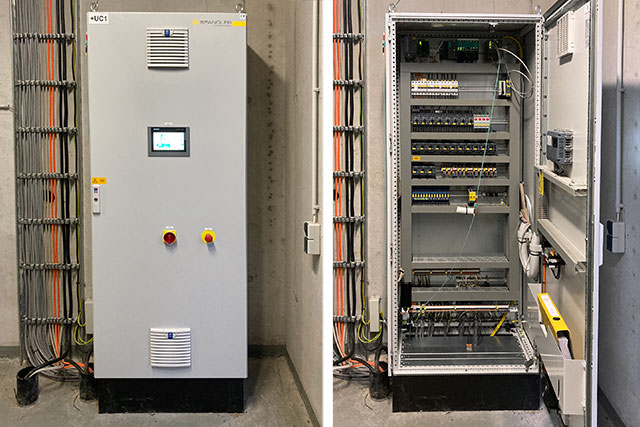Heating without fuel
Deutsch
SPANGLER – the Plus of Sustainability.
Waste water heat utilization is becoming increasingly economically interesting due to the rising energy prices. Thus, in the municipality Schallstadt, near Freiburg in the South of Germany, the favorable location of the new building area near the sewer channel was used to install a system called ThermWin which was developed by Huber SE.
Spangler has planned, produced and programmed the automation technology. Building owner and operator is Energiedienst AG.
Using thermal energy from waste water
The nearby channel collects the waste water from the neighboring communities Ebringen and Pfaffenweiler. For extraction of the waste water, a Huber pumping stations screen ROTAMAT® RoK4 was installed underground, so it is invisible. It is in the first position of the closed solids cycle and is for cleaning of the waste water. Coarse material is removed and returned to the channel. Pumps convey the energy-rich waste water to the Huber heat exchangers RoWin. The waste water heat exchangers have an automatic self-cleaning. A constant heat transmission to a storage silo of 500 m³ is guaranteed The RoWin together with the ROTAMAT RoK4 results in the Huber ThermWin procedure. With the heat generated a residential area with approximately 200 apartments and the town hall is heated. Fossil energy sources are not used, that sustainably protects our environment.
Technical know-how
In the main control cabinet, the Siemens control PLC S7-1512SP-1 PN was installed which is operated via the Siemens operation device TP700 and which enables logging of process parameters on USB stick. The connection to the pump station was implemented with a decentral interface module ET200SP. Both plant parts are connected via a fiber optic-connection. Such an advanced machine requires an innovative control system, which Spangler GmbH has realized with this project. There is a temporary buffering of the 24VDC PLC-voltage to guarantee a safe process parameter storage in case of voltage breakdown. Additionally, the plant is connected via Sm@rtServer-Funktion to the web-based remote visualisation.


 Heating without fuel
Heating without fuel